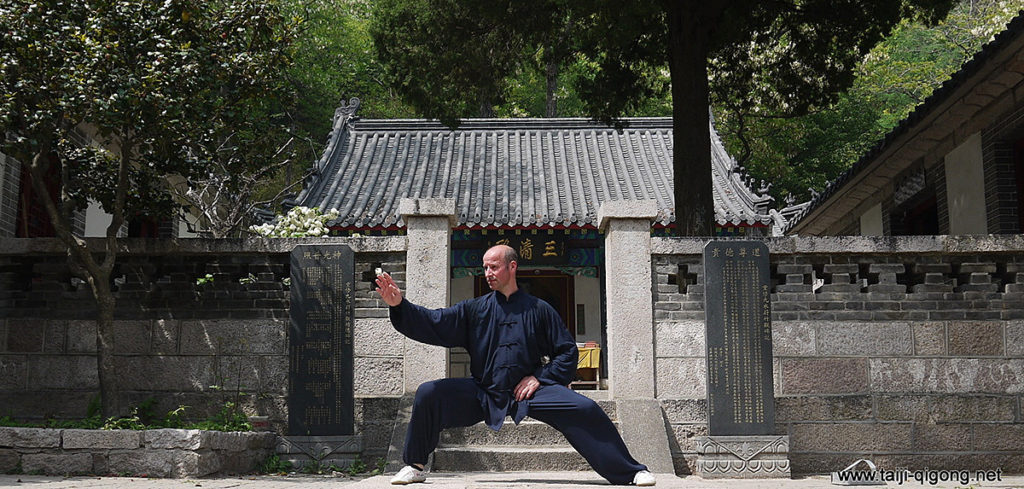The secret and the art of letting go
 Taijiquan is a traditional Chinese martial art. It goes back to the Master Chen Wang Ting (1597-1664) from the 9th generation of the Chen family. From his martial arts experience, the insights of Taoist teachings and his encounter with inner alchemy, he developed a new internal martial art system which was later called Taijiquan. Chen Wangting recognized the positive health effects, which were generated by the inner spiraling movements. At the same time he also recognized that a large amount of energy was released in the body trough relaxation and that his fighting skills continued to rise in spite of old age. Since Taijiquan uses internal energy instead of muscle power, Taijiquan can be learned and practiced by both the young and the old.
Taijiquan is a traditional Chinese martial art. It goes back to the Master Chen Wang Ting (1597-1664) from the 9th generation of the Chen family. From his martial arts experience, the insights of Taoist teachings and his encounter with inner alchemy, he developed a new internal martial art system which was later called Taijiquan. Chen Wangting recognized the positive health effects, which were generated by the inner spiraling movements. At the same time he also recognized that a large amount of energy was released in the body trough relaxation and that his fighting skills continued to rise in spite of old age. Since Taijiquan uses internal energy instead of muscle power, Taijiquan can be learned and practiced by both the young and the old.
Taijiquan uses the philosophy of yin and yang. This refers to the theory of two opposites, for example, up and down, open and closed, etc. Both must be present, because a part cannot exist without its corresponding counterpart.
In Taijiquan we seek the constant connections in the body. This refers to the connections of the hip and shoulder, elbow and knee, hands and feet. Furthermore, an imaginary line is going through the ear, the shoulder, the hip and the ankle. By raising the head while at the same time lowering the coccyx we can create an natural extension inside of the spine, the pressure being taken out of the lower back and decreasing the pressure on the intervertebral discs.The body has to constantly remain relaxed so the diaphragm can be lowered more easily, thus creating a deeper abdominal breathing. The arm position is rounded. The movements of the shoulders and arms are created by the torso, with the elbows always facing down, so that no tension can be build up in the shoulders and a spiral movement can be created.